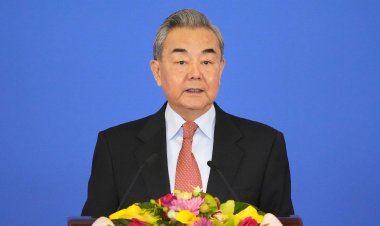Global rate reductions benefit emerging markets: "China in the lead"
With global economic conditions in flux, investors are increasingly exploring opportunities beyond traditional markets.

With global economic dynamics evolving, investors are increasingly exploring options beyond traditional markets. As growth in the U.S. and other advanced economies shows signs of slowing, emerging markets are becoming an appealing alternative. Country-specific initiatives, such as proactive fiscal and monetary measures, position nations like China as key players for attracting international capital.
The U.S. economy displays growing signs of a downturn, with both the labor market and inflation showing deceleration, leading to expectations of further rate cuts by the Federal Reserve heading into 2025. A significant concern influencing the Federal Open Market Committee's decision-making process is the soaring U.S. debt, which has reached unprecedented levels and contributes to broader economic apprehensions.
In a notable policy shift, the FOMC initiated its easing cycle with a 50 basis point cut, transitioning from the aggressive tightening experienced in 2022 and 2023. This adjustment was driven by new data signaling a clear economic slowdown. The U.S. unemployment rate climbed to 4.2 percent in September 2024, up from 3.6 percent a year prior, indicating a softening labor market where hiring is slowing due to economic uncertainty.
Inflation has also moderated, with the Consumer Price Index dropping to 2.4 percent in September, down from 3.4 percent in December 2023. This decline suggests the Fed's approaches to reducing price pressures are having a positive effect, yet it raises further concerns about demand potentially weakening too rapidly.
A key issue guiding the Fed's cautious strategy regarding rate cuts is the country's escalating debt burden, often overlooked by many market observers. As reported by Fiscal Data, the official U.S. government source, the total U.S. debt has reached a staggering $35.46 trillion as of 2024, an all-time high. This massive debt load pressures the Fed to ease monetary policy to keep interest payments manageable and avoid exacerbating economic stagnation.
With the government continuing to rely on substantial borrowing to finance its operations, servicing costs are on the rise. High-interest rates could place an increasingly heavy burden on the federal budget, limiting funding for essential areas such as infrastructure, education, and healthcare. Thus, effectively managing this debt has emerged as a crucial factor informing the Fed's gradual approach to interest rate reductions.
Despite the prevailing economic slowdown, Fed officials are anticipated to maintain a slow, deliberate strategy regarding interest rate cuts. This cautious posture may diminish the allure of U.S. assets for global investors who had hoped for more aggressive monetary easing to bolster growth.
Statements from senior Fed officials have echoed this cautious approach. On October 9, Lorie Logan, president of the Dallas Fed, highlighted that following the recent half-percentage-point rate cut, a more "gradual path" to policy normalization would be appropriate unless conditions change markedly. This suggests the Fed is not inclined to quickly implement further aggressive reductions like the 50-basis-point cut executed in September.
On October 8, Susan Collins of the Boston Fed expressed similar views, emphasizing the importance of a "careful, data-based approach" to policy normalization. She pointed out the Fed's duty to balance the risks of both inflation and slower growth, indicating a preference for incremental policy adjustments moving forward.
Such a cautious tone from key policymakers implies that aggressive rate cuts are not on the immediate horizon, with the Fed likely favoring smaller, measured adjustments that emphasize long-term stability over short-term stimulus.
For global investors, this restraint could diminish the attractiveness of U.S. assets, especially as other central banks, like the European Central Bank, may pursue more aggressive easing in 2025. A slower cadence of rate cuts might create a less competitive environment for U.S. assets, while a cooling economy could adversely impact U.S. equity prospects, potentially leading to waning capital inflows as investors seek better returns and growth opportunities elsewhere.
**China emerges as a leading investment opportunity**
Conversely, China is well-positioned to harness the global shift in capital flows. Historically, emerging markets see increased investment during periods of global rate cuts, as reduced rates in developed economies often push capital toward higher-yielding, faster-growing regions. In this current environment, China stands out as a prime destination for global investors.
The People's Bank of China, the nation’s central bank, has adopted a more proactive stance in easing monetary policy to bolster growth. Beyond interest rate cuts, the central bank has introduced liquidity measures such as money market injections and a reduction in the Reserve Requirement Ratio. Notably, on October 10, the central bank initiated a 500 billion yuan swap tool, enabling qualified financial firms to exchange government bonds or central bank bills for corporate bonds, stocks, or exchange-traded funds, further supporting capital markets.
China's fiscal strategies have mirrored this proactive stance, with the government implementing stimulus measures aimed at enhancing infrastructure investment, supporting pivotal sectors including technology and green energy, and promoting domestic consumption. These efforts are creating a more favorable landscape for corporate earnings growth, which could bolster stock market performance in the near future.
What particularly draws investors to China is its relatively low stock market valuations. Following a challenging period marked by regulatory restrictions and economic deceleration, Chinese equities are now trading at some of their lowest levels in years. For value-seeking investors, the country presents a promising opportunity amid supportive policies.
As global rates are anticipated to continue their decline, China's proactive policies, coupled with its economic resilience, are likely to attract increasing capital inflows. Emerging market assets, especially those from China, are emerging as appealing alternatives for investors seeking higher returns and accelerated growth compared to U.S. and other developed market assets.
Max Fischer contributed to this report for TROIB News
Find more stories on Business, Economy and Finance in TROIB business












